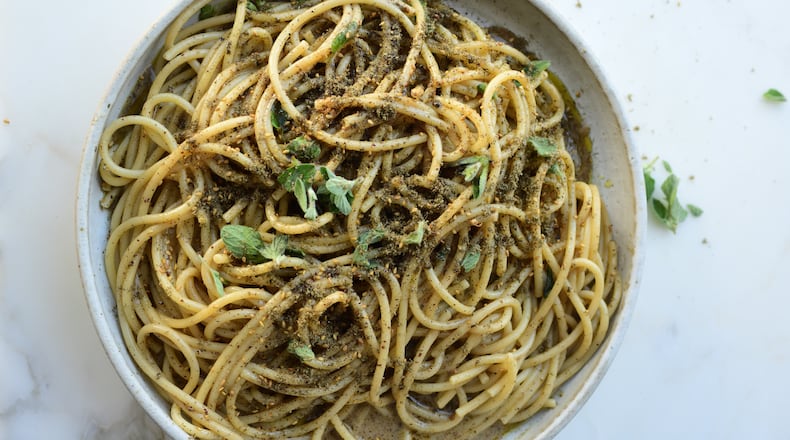Everyone is on a hunt for maximum flavor these days. Consider the titles of some terrific fall cookbook releases. There’s Atlanta chef Asha Gomez’s “I Cook in Color: Bright Flavors From My Kitchen and Around the World” (Running Press, $32.50), molecular biologist turned food blogger Nik Sharma’s “The Flavor Equation: The Science of Great Cooking Explained” (Chronicle, $35) and renowned chef and author Yotam Ottolenghi’s “Ottolenghi Flavor” (Ten Speed, $35) that seeks to find the full flavor potential for vegetarian dishes.
What’s exciting about books such as these — particularly those by Gomez and Ottolenghi — is that they encourage liberated cooking, a style that isn’t confined to culinary traditions. Both chefs embrace a global pantry, uncommon ingredient pairings and cooking processes that ramp up flavors. The end result is often a fresh take on familiar dishes.
One example is Ottolenghi’s adaptation of cacio e pepe, the Roman pasta dish starring cheese and pepper. He breaks with custom by introducing into the mix za’atar, a Middle Eastern flavoring blend consisting of dried thyme, oregano, sumac and toasted sesame seeds.
“Messing with an Italian classic is not something we do lightly,” Ottolenghi writes in the headnote, “but adding za’atar really doesn’t take anything away from the much-admired simplicity of this dish. All it does is add a layer of delicious herbiness that goes hand in hand with the pepper and the cheese.”
If you don’t have a jar of za’atar in your spice collection, the blend is common enough these days that you’ll find it in the spice aisle of most supermarkets.
And since we’re talking about seasonings, cacio e pepe is one dish where freshly ground pepper makes a difference. Get out the pepper mill and start cracking.
Ottolenghi also offers some guidance about the technique. To achieve a rich, smooth sauce, use a wide pan and some of the pasta cooking water, which ensures enough starch to allow the sauce to emulsify. Finely grate the cheeses and keep them separated so that they “melt happily” when added to the sauce. Lastly, have all the ingredients measured before you start cooking. It’s a dish that comes together in a jiffy.
Credit: Jonathan Lovekin
Credit: Jonathan Lovekin
Reprinted from “Ottolenghi Flavor.” Copyright 2020 by Yotam Ottolenghi and Ixta Belfrage. Published by Ten Speed Press, an imprint of Penguin Random House LLC.
Read more stories like this by liking Atlanta Restaurant Scene on Facebook, following @ATLDiningNews on Twitter and @ajcdining on Instagram.
About the Author
The Latest
Featured




